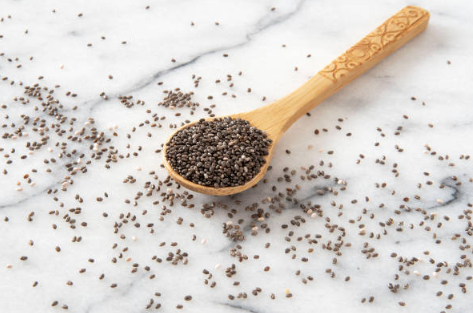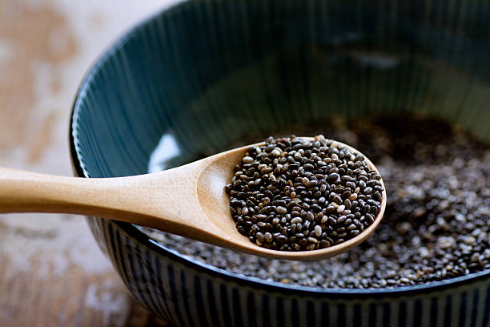Small but mighty, chia seeds are a nutritional powerhouse that can add a boost to countless recipes. While they first gained pop-culture fame for sprouting on novelty clay figurines (remember Chia Pets?), these days they’re celebrated as a superfood ingredient in everything from creamy desserts to heart-healthy side dishes.
Chia seeds are prepared and eaten much like whole grains, but they’re actually a pseudograin. They have a mild flavor and easily take on the taste of whatever they’re paired with. When soaked in liquid, chia seeds swell and form a gel-like texture, making them a great addition to yogurt, smoothies, salads, and more.

What Are Chia Seeds?
Chia seeds are the edible seeds of Salvia hispanica, a desert plant native to Central America. They’re incredibly versatile—eat them raw, soak them in liquid, grind them into flour, bake them into goods, or use them as a vegan thickener to replace eggs or dairy. Their mild, neutral taste blends easily with other ingredients, but the texture changes dramatically depending on whether they’re eaten whole, ground, or turned into a gel.
Types of Chia Seeds
Chia seeds come in both black and white varieties, but their taste and nutritional value are nearly identical. Black seeds tend to be slightly smaller, while sprouted white seeds can offer an extra dose of chlorophyll. In most cases, recipes can use either interchangeably, and many commercial chia seed packages are a mix of both.
Health Benefits of Chia Seeds
Chia seeds offer far more than just a pleasant crunch:
-
Rich in omega-3 fatty acids (especially alpha-linolenic acid, or ALA)
-
High in micronutrients like potassium, magnesium, calcium, and iron
-
Naturally gluten- and cholesterol-free
A single tablespoon of chia seeds provides about 5 grams of fiber—roughly the same as half an avocado—helping support digestion, gut microbiome health, and anti-inflammatory benefits. Thanks to this high fiber content, chia seeds are often praised for promoting satiety, helping you feel full for longer.
Nutrition Facts (per 1 oz / ~28 g)
-
Calories: 138
-
Protein: 4.7 g
-
Fat: 8.7 g
-
Fiber: 10 g
For best results, start with about 1 tablespoon a day, and gradually add more to meals and recipes.
How to Use Chia Seeds
You can eat chia seeds raw or incorporate them into recipes. Because they absorb liquid quickly, soaking them for a few hours (or overnight) in milk or water creates a pudding-like texture—perfect for snacks or as a binder in baked goods like coconut chia granola bars.
Basic Soaking Ratio: For every ¼ cup of chia seeds, add 1 cup of liquid. Refrigerate for at least 2 hours before using.
Other ways to enjoy chia seeds:
-
Blend into smoothies for added thickness and nutrition
-
Bake into cookies or muffins
-
Sprinkle over oatmeal or rice pilaf for a boost of texture
-
Toast in a 340°F (170°C) oven for 3–5 minutes for a nuttier flavor before using

Chia Seeds vs. Flaxseeds
Flaxseeds must be ground before your body can absorb their nutrients, while chia seeds can be digested whole, ground, sprouted, or soaked. Both are excellent sources of fiber, omega-3 fatty acids, and protein, but they differ in flavor: chia seeds are virtually tasteless, while flaxseeds have a light nutty flavor.
How to Buy Chia Seeds
Look for chia seeds in the health food section of grocery stores or from online retailers. Unlike many produce items, organic chia seeds are often similarly priced to non-organic varieties, so choosing organic is an easy way to avoid pesticide- or chemical-treated seeds.
How to Store Chia Seeds
Because chia seeds are high in polyunsaturated fats (omega-3s), they can spoil under extreme conditions. Store them in an airtight container in a cool, dry place. Depending on storage conditions, they’ll keep for 6 months to over a year. Always check for off smells or packaging damage, as these may indicate exposure to air and reduced shelf life.
Now that you know the benefits of chia seeds, start adding them to your breakfast muffins, chocolate desserts, or even savory dishes like tuna salad to enjoy their versatility and nutrition.